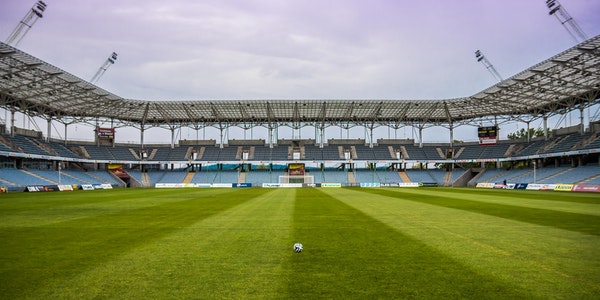(6) Energy Performance Contracts (EPCs):
Overview: EPCs are agreements where an energy service company (ESCO) finances, installs, and maintains energy efficiency upgrades.
Advantages: Upgrades are paid for through cost savings generated by energy efficiency improvements, minimizing upfront costs for the client.
Considerations: Long-term contracts typically involve shared savings or guaranteed savings arrangements, with contractual terms tailored to project scope and performance metrics.
(7) Public and Private Investment Partnerships:
Overview: Collaborative funding models involve partnerships between public entities, private investors, and businesses to finance large-scale technology projects.
Advantages: Pooling resources, expertise, and risk-sharing among stakeholders to support infrastructure development and innovation initiatives.
Considerations: Requires alignment of interests, legal agreements, and governance structures to manage investment returns and project outcomes effectively.
Choosing the right funding and financing option for technology investments depends on factors such as financial capacity, project scope, risk tolerance, and strategic objectives. By exploring diverse funding sources, leveraging incentives and financing programs, and conducting thorough financial planning, businesses and consumers can overcome initial cost barriers, maximize return on investment, and accelerate the adoption of transformative technologies that drive growth, efficiency, and sustainability.
Technical Challenges:
Compatibility with existing infrastructure
Strategies for Seamless Integration and Operational Efficiency
When considering new technology investments, compatibility with existing infrastructure is crucial for ensuring seamless integration and maximizing operational efficiency. Here are key strategies to address compatibility challenges:
- Comprehensive Infrastructure Assessment:
Overview: Conduct a thorough assessment of current infrastructure, including hardware, software systems, networking capabilities, and operational processes.
Purpose: Identify potential gaps, constraints, and compatibility issues that may impact the deployment and performance of new technologies.
Example: Before implementing a new CRM system, assess existing IT infrastructure, databases, and network bandwidth to ensure compatibility with system requirements.
- Modular and Scalable Solutions:
Overview: Choose technology solutions that offer modularity and scalability to align with current infrastructure capabilities and future expansion needs.
Purpose: Facilitate phased implementation, minimize disruption, and accommodate future upgrades or enhancements as business requirements evolve.
Example: Selecting cloud-based software-as-a-service (SaaS) solutions allows businesses to scale usage according to current needs and gradually integrate with existing on-premises systems.
- Interoperability Standards and APIs:
Overview: Prioritize technologies that adhere to industry standards and provide application programming interfaces (APIs) for seamless integration with third-party systems.
Purpose: Enable data exchange, interoperability between different platforms, and integration with legacy systems without extensive customization.
Example: Adopting IoT devices with standardized communication protocols (e.g., MQTT for messaging) ensures compatibility with existing enterprise resource planning (ERP) or manufacturing execution systems (MES).
- Middleware and Integration Platforms:
Overview: Utilize middleware solutions or integration platforms to bridge communication gaps between disparate systems and facilitate data synchronization.
Purpose: Streamline data flows, automate workflows, and maintain data integrity across interconnected applications and databases.
Example: Implementing an enterprise service bus (ESB) allows real-time data exchange between customer relationship management (CRM) and financial systems, ensuring consistency in customer information and transaction records.
- Upgrade and Retrofitting Strategies:
Overview: Develop a phased approach for upgrading or retrofitting existing infrastructure components to align with new technology deployments.
Purpose: Enhance system performance, security, and functionality while minimizing downtime and operational disruptions.
Example: Upgrading network infrastructure to support higher bandwidth requirements for new video conferencing solutions, ensuring reliable connectivity and quality of service.
- Training and Change Management:
Overview: Invest in training programs and change management initiatives to educate staff on new technologies, processes, and integration protocols.
Purpose: Foster adoption, mitigate resistance to change, and empower employees to effectively utilize integrated systems for improved productivity and decision-making.
Example: Conducting workshops and providing user manuals during the rollout of a new enterprise resource planning (ERP) system helps employees navigate interface changes and leverage enhanced functionalities.
Achieving compatibility with existing infrastructure requires a strategic approach that encompasses thorough assessment, modular solutions, adherence to standards, middleware integration, upgrade strategies, and proactive change management. By addressing compatibility challenges early in the planning phase and leveraging appropriate technology and integration solutions, businesses can optimize operational efficiency, enhance data connectivity, and position themselves for scalable growth and innovation in an increasingly interconnected digital landscape.
Technological limitations and ongoing development
Strategies for Mitigating Risks and Harnessing Innovation
As businesses and consumers invest in new technologies, they must navigate both existing limitations and ongoing developments to maximize benefits and mitigate risks. Here are key considerations and strategies:
- Understanding Technological Limitations:
Identification of Constraints:
Detail: Recognize current technological constraints such as compatibility issues, scalability challenges, performance bottlenecks, and regulatory compliance requirements.
Purpose: Mitigate risks associated with potential operational disruptions, data security vulnerabilities, and integration complexities.
Example: Before deploying AI-driven automation, assess data quality issues and algorithmic biases to ensure accurate decision-making and compliance with privacy regulations.
- Risk Assessment and Management:
Comprehensive Evaluation:
Detail: Conduct thorough risk assessments to identify and prioritize technological, operational, financial, and cybersecurity risks associated with new investments.
Purpose: Develop risk mitigation strategies, contingency plans, and monitoring mechanisms to safeguard investments and ensure continuity of operations.
Example: Implementing robust cybersecurity protocols and disaster recovery plans protects against data breaches and system failures in cloud-based infrastructure deployments.
- Adopting Agile Development Practices:
Iterative Approach:
Detail: Embrace agile methodologies to facilitate iterative development, continuous testing, and rapid adaptation of technology solutions based on user feedback and evolving market demands.
Purpose: Accelerate time-to-market, enhance product quality, and foster innovation while addressing emerging challenges and refining feature functionalities.
Example: Agile software development enables frequent updates and enhancements to mobile applications, addressing user experience issues and incorporating new features in response to market trends.
- Monitoring Technological Advancements:
Continuous Learning and Adaptation:
Detail: Stay informed about industry trends, emerging technologies, and regulatory changes through ongoing research, industry collaborations, and participation in professional networks.
Purpose: Anticipate future technological developments, identify opportunities for innovation, and align investment strategies with evolving market dynamics and consumer preferences.
Example: Monitoring advancements in renewable energy storage technologies allows businesses to capitalize on improvements in efficiency and cost-effectiveness for sustainable energy projects.
- Partnerships and Collaborations:
Ecosystem Engagement:
Detail: Foster strategic partnerships with technology providers, research institutions, and industry leaders to access specialized expertise, co-develop solutions, and share resources.
Purpose: Leverage collective knowledge, resources, and market insights to address complex challenges, accelerate innovation, and enhance competitive advantage.
Example: Collaborating with academia and startups in biotechnology accelerates research and development of novel therapies, leveraging complementary expertise and infrastructure.
- Regulatory Compliance and Ethical Considerations:
Ethical Frameworks:
Detail: Prioritize ethical considerations and regulatory compliance when implementing new technologies, ensuring adherence to data privacy laws, ethical AI principles, and industry standards.
Purpose: Build trust with stakeholders, protect consumer rights, and mitigate reputational risks associated with non-compliance or misuse of technology.
Example: Integrating privacy-by-design principles in IoT devices ensures data protection and transparency in data collection, storage, and processing practices.
Navigating technological limitations and ongoing development requires a proactive approach that balances risk management with innovation. By understanding current constraints, adopting agile practices, monitoring technological advancements, fostering partnerships, and prioritizing regulatory compliance, businesses and consumers can effectively harness the transformative potential of new technologies while safeguarding investments and maintaining ethical standards. Continuous learning, adaptation, and strategic alignment with market trends are essential for staying competitive and resilient in an increasingly dynamic and interconnected digital landscape.
Regulatory and Standardization Issues:
Compliance with sports governing bodies
Strategies for Adherence and Integration
When integrating new technologies in sports venues or related applications, compliance with sports governing bodies’ regulations is paramount. Here are key considerations and strategies to ensure adherence:
- Understanding Regulatory Requirements:
Research and Documentation:
Detail: Conduct thorough research on rules, guidelines, and standards set by relevant sports governing bodies (e.g., FIFA, IOC, NBA) regarding technology use in competitions, venues, and broadcasts.
Purpose: Ensure full comprehension of permissible technologies, restrictions, and protocols to avoid penalties, disputes, or disqualifications.
Example: Familiarizing with FIFA’s regulations on goal-line technology to ensure compliance and seamless integration during football matches.
- Engaging with Sports Governing Bodies:
Communication and Collaboration:
Detail: Establish communication channels with sports governing bodies to clarify interpretations, seek approvals for new technologies, and participate in regulatory discussions.
Purpose: Facilitate transparency, obtain official endorsements, and align technology implementations with evolving industry standards.
Example: Collaborating with NBA officials to pilot and validate new instant replay technologies for accurate officiating and game management.
- Testing and Certification Processes:
Validation and Verification:
Detail: Subject technologies to rigorous testing procedures and certification protocols specified by sports governing bodies to ensure reliability, accuracy, and fairness.
Purpose: Obtain official endorsements, certifications, or approvals that validate compliance with technical specifications and operational requirements.
Example: Testing video assistant referee (VAR) systems in accordance with UEFA guidelines to ensure consistency and effectiveness in reviewing critical match incidents.
- Data Privacy and Security Protocols:
Compliance and Protection:
Detail: Implement robust data privacy measures, encryption standards, and cybersecurity protocols to safeguard sensitive information collected from athletes, officials, and spectators.
Purpose: Ensure compliance with global data protection regulations (e.g., GDPR, CCPA) and mitigate risks associated with unauthorized access or breaches.
Example: Adhering to GDPR requirements when collecting and processing biometric data from athletes for performance analysis and injury prevention.
- Ethical Use of Technology:
Integrity and Fair Play:
Detail: Uphold ethical principles in the deployment and utilization of technology to uphold the integrity of sports competitions, promote fair play, and preserve the spirit of sportsmanship.
Purpose: Prevent misuse, manipulation, or unfair advantages derived from technological advancements, maintaining trust and credibility among stakeholders.
Example: Enforcing strict guidelines on the use of performance-enhancing technologies in athletics to ensure equitable opportunities and uphold competitive balance.
- Continuous Monitoring and Compliance Audits:
Sustainability and Adherence:
Detail: Establish monitoring mechanisms and conduct regular audits to assess ongoing compliance with regulatory requirements, address emerging issues, and implement corrective actions.
Purpose: Maintain operational efficiency, adapt to regulatory updates, and demonstrate commitment to ethical standards and governance.
Example: Conducting periodic audits of stadium security systems to verify compliance with MLB safety protocols and emergency preparedness guidelines.
Compliance with sports governing bodies’ regulations is critical for integrating technology responsibly and effectively in sports environments. By understanding regulatory requirements, engaging with stakeholders, adhering to testing and certification processes, ensuring data privacy and security, upholding ethical standards, and implementing robust monitoring practices, organizations can navigate complexities, mitigate risks, and enhance the integrity and sustainability of technological implementations in sports. Striking a balance between innovation and compliance fosters a competitive edge while maintaining the authenticity and fairness of sports competitions.
Standards for lighting quality and safety
Ensuring Optimal Conditions and Safety Protocols
Lighting in sports venues plays a crucial role in ensuring optimal visibility, performance, and safety for athletes, officials, and spectators. Compliance with established standards is essential to meet these objectives effectively. Here are key standards for lighting quality and safety in sports venues:
- Illumination Levels and Uniformity:
Standards Overview:
Detail: Lighting levels are typically measured in lux (lx) and vary depending on the sport and venue size. For example, FIFA recommends a minimum of 500 lux for international football matches.
Purpose: Ensure sufficient illumination for players to perform effectively, referees to make accurate decisions, and spectators to enjoy the event without visual discomfort.
Example: Meeting International Commission on Illumination (CIE) standards for uniformity ensures consistent lighting across the playing field or court, minimizing glare and shadows.
- Color Rendering Index (CRI):
Standards Overview:
Detail: CRI measures how accurately light renders colors compared to natural sunlight (CRI of 100). Higher CRI values (typically above 80) are preferred for sports lighting to enhance visibility and visual clarity.
Purpose: Facilitate accurate perception of team colors, ball movement, and player actions, crucial for both participants and spectators.
Example: Meeting CRI standards specified by organizations like the American National Standards Institute (ANSI) ensures colors appear vivid and true under artificial lighting conditions.
- Flicker and Strobe Effects:
Standards Overview:
Detail: Lighting systems should minimize flicker and strobe effects, which can affect visual perception and cause discomfort or distraction to athletes and spectators.
Purpose: Ensure consistent and stable lighting conditions to support concentration, reaction times, and overall safety during fast-paced sports activities.
Example: Adherence to standards set by organizations like the Illuminating Engineering Society (IES) for flicker-free operation enhances visual comfort and reduces potential health risks associated with rapid light intensity fluctuations.
(To Be Continued)





